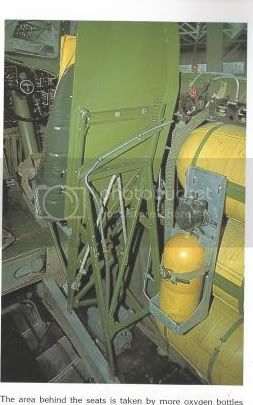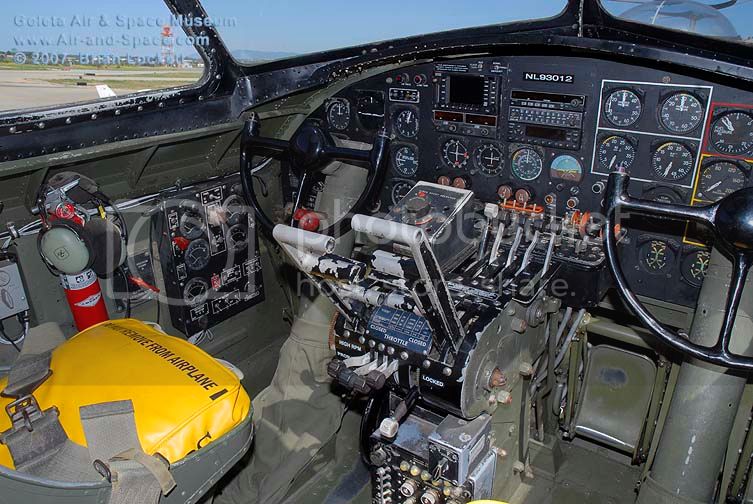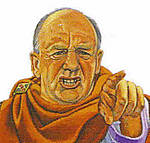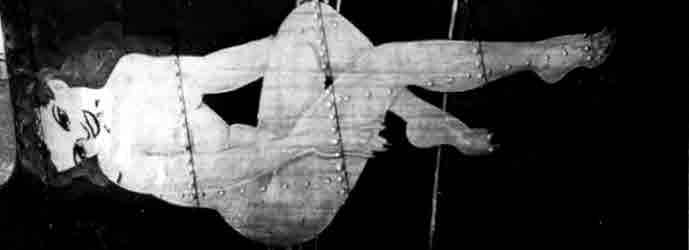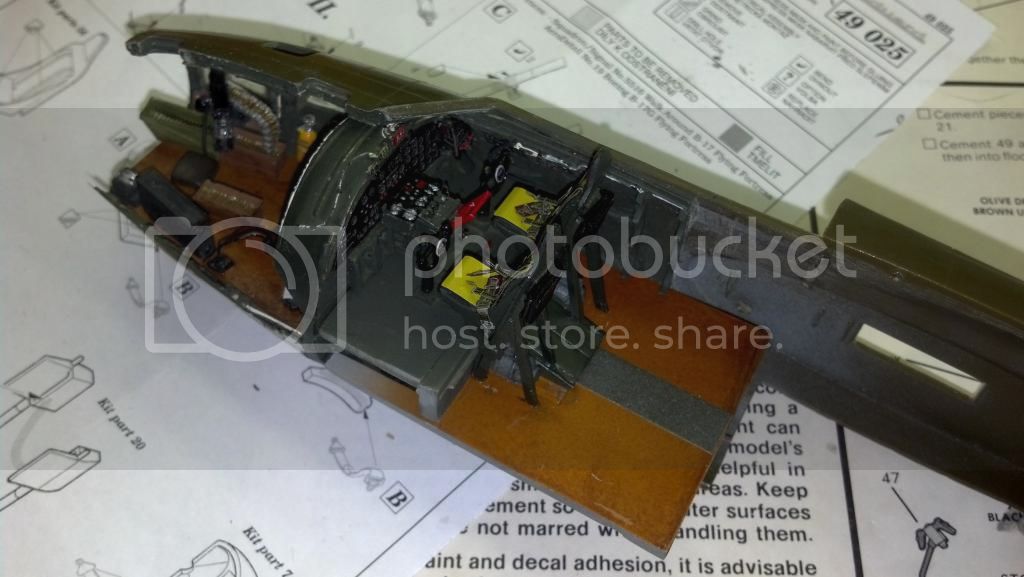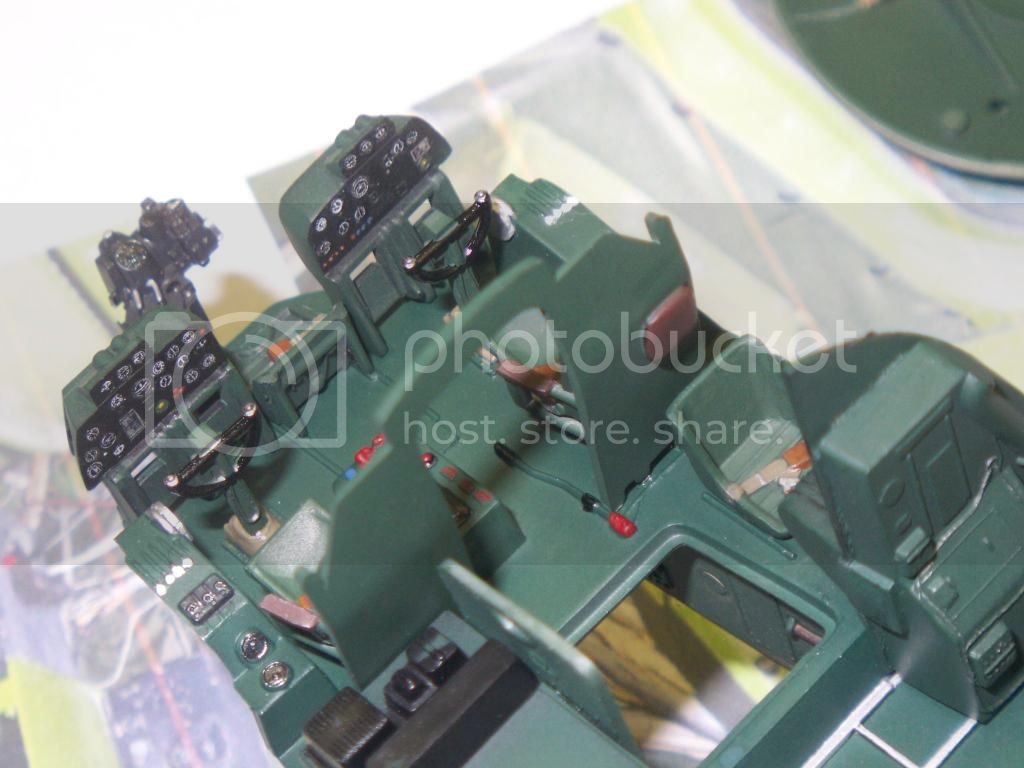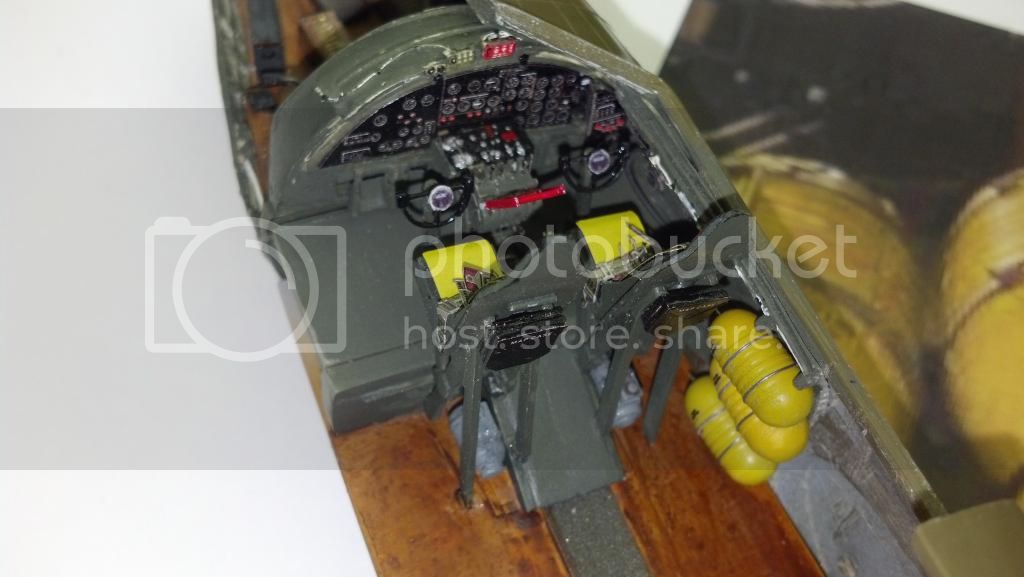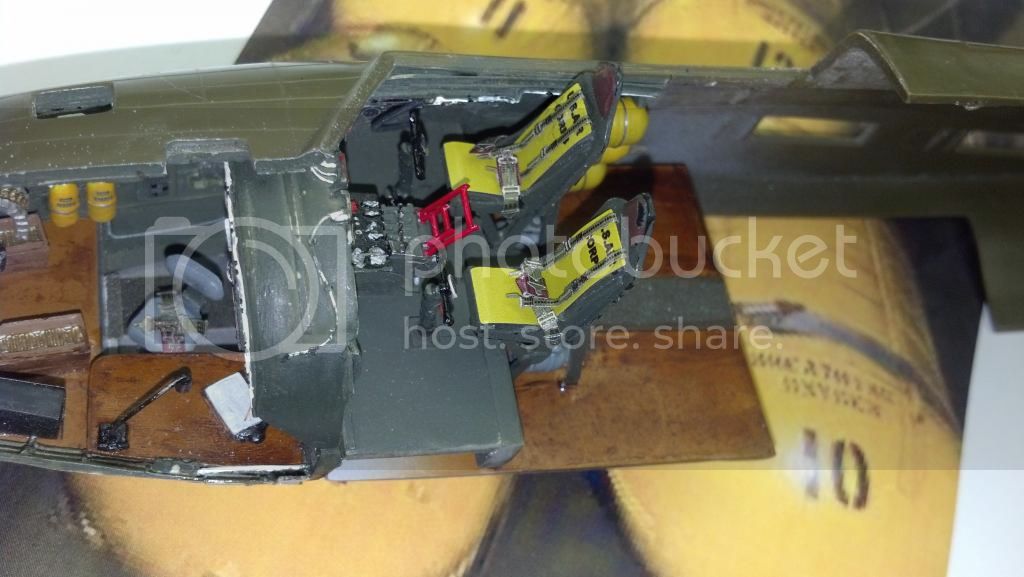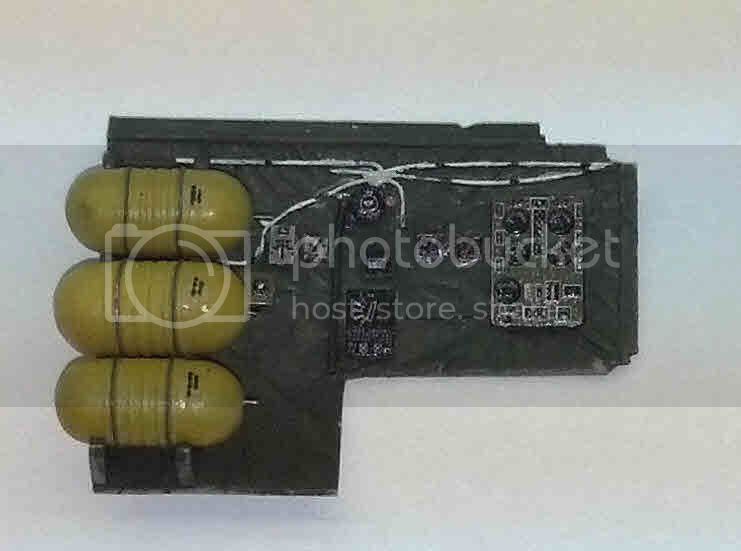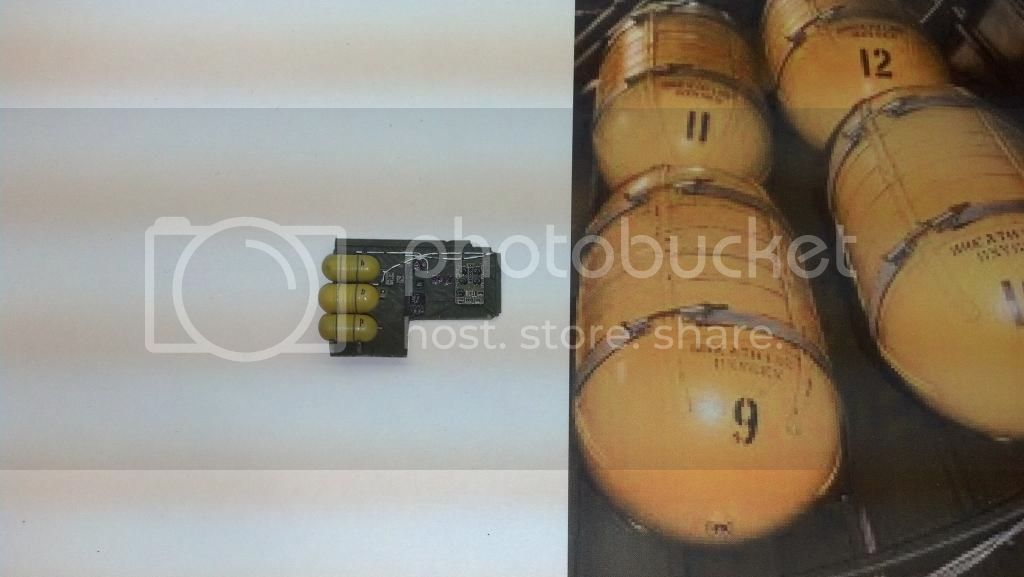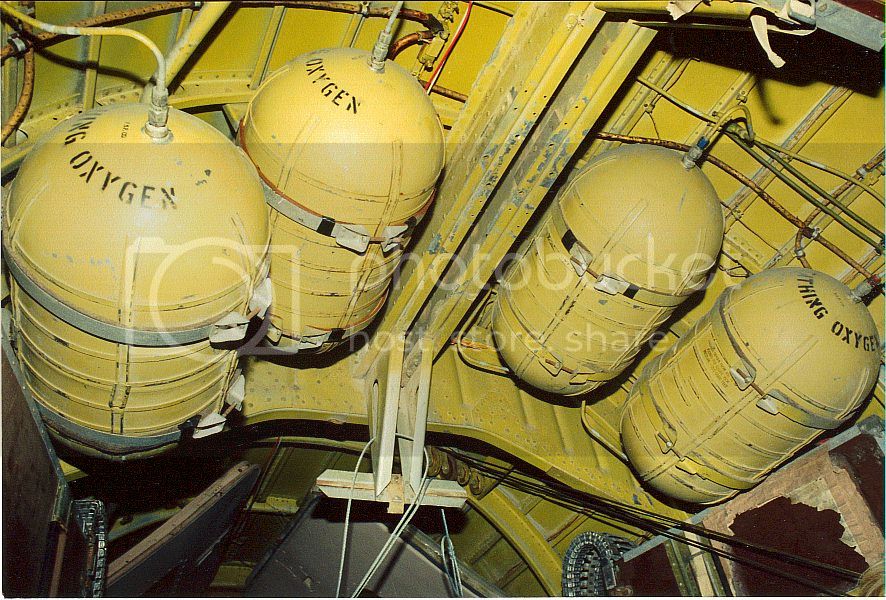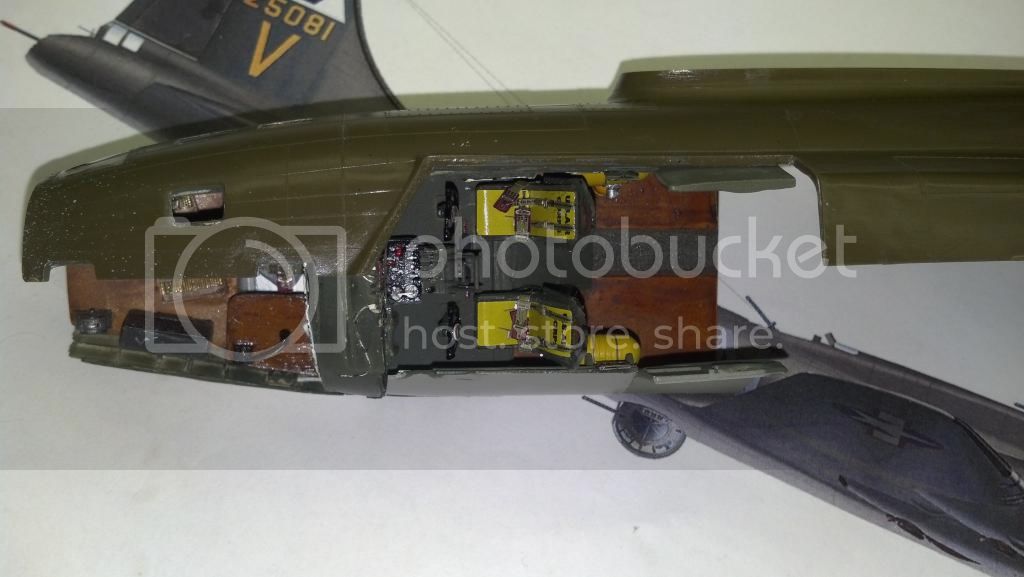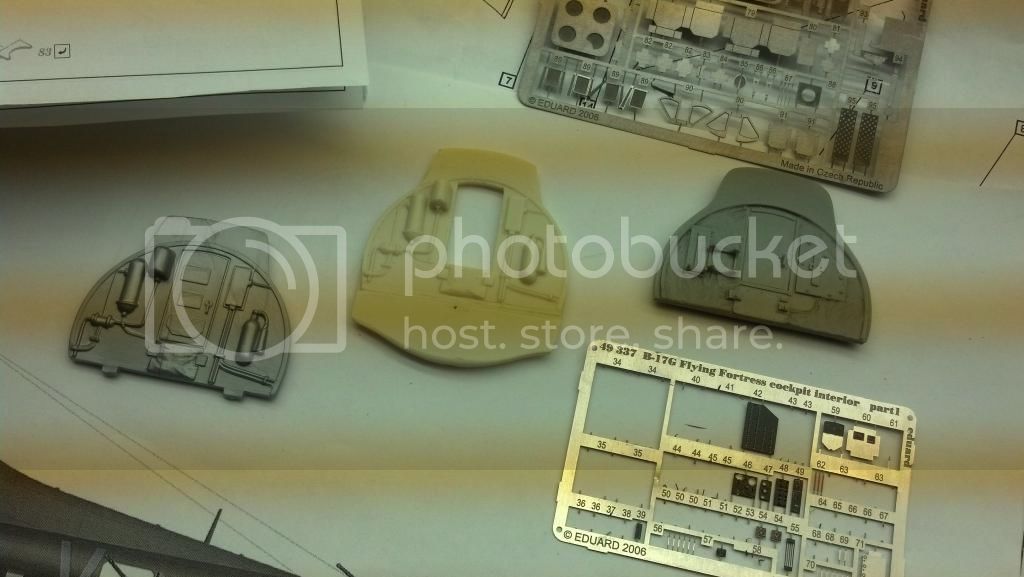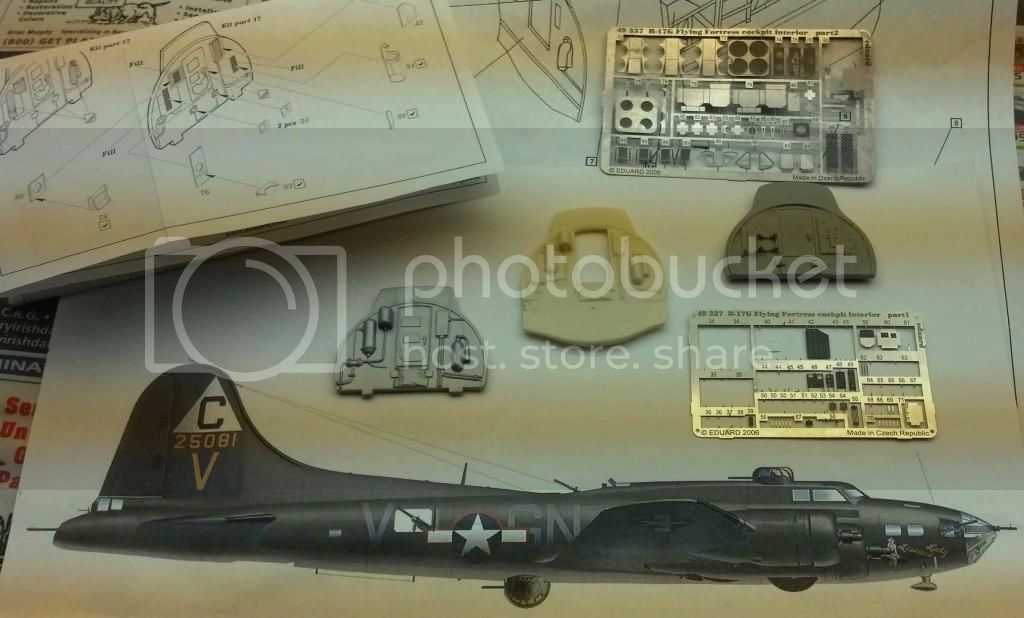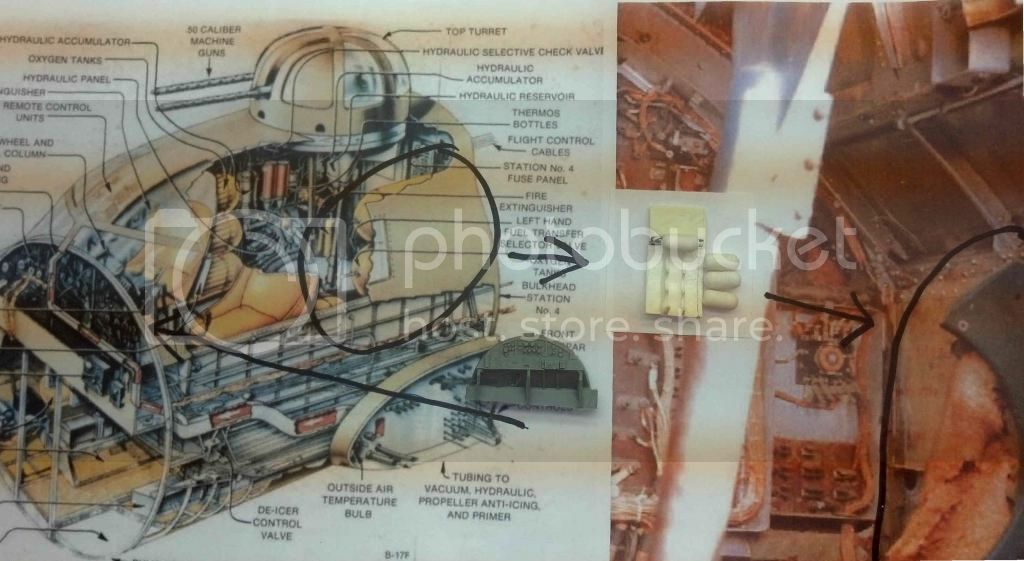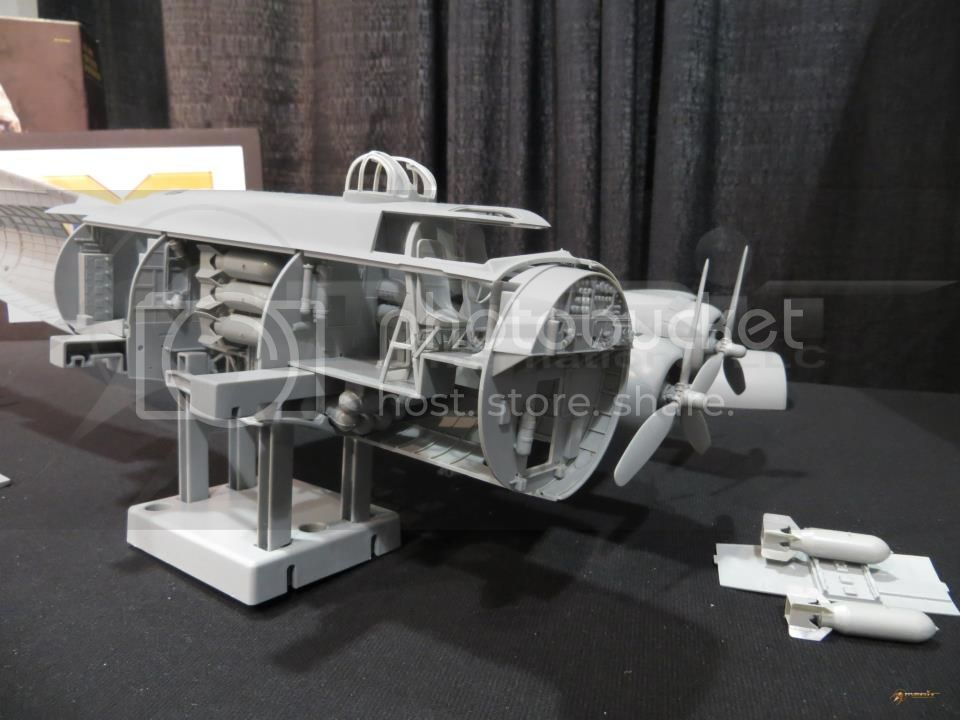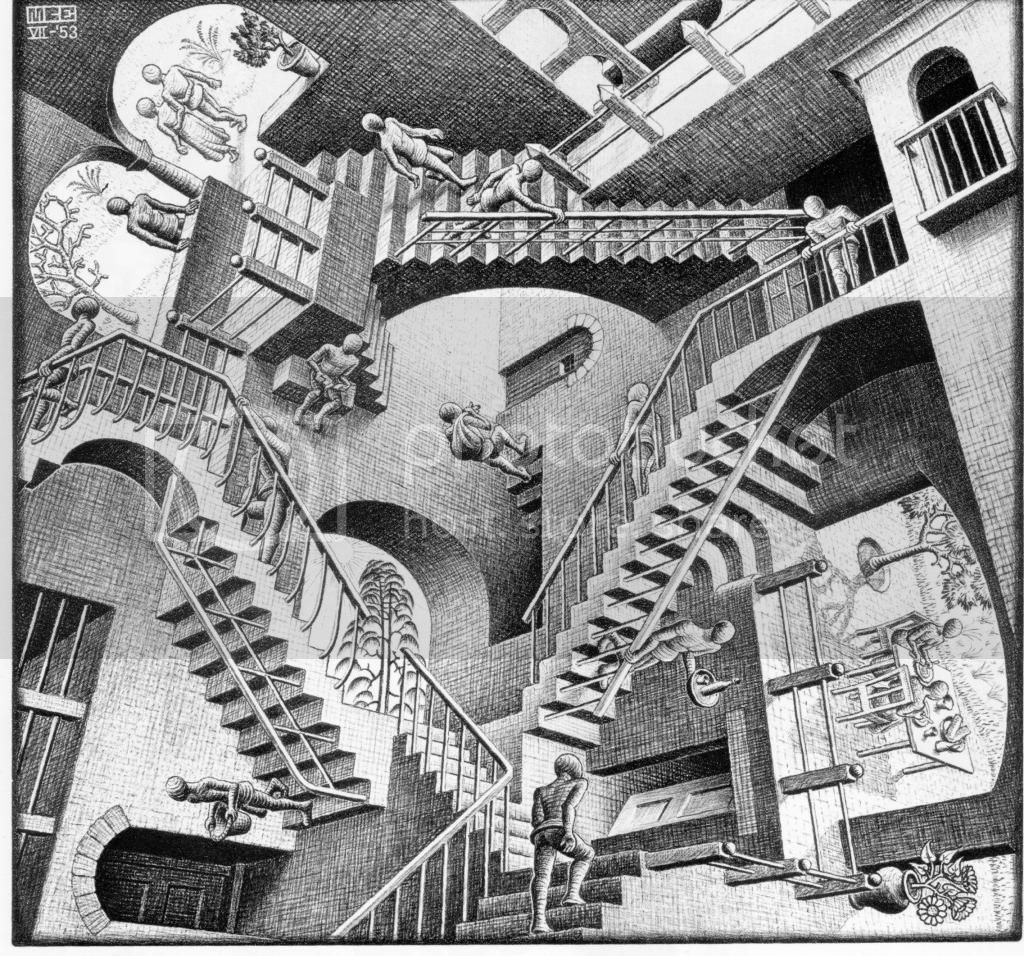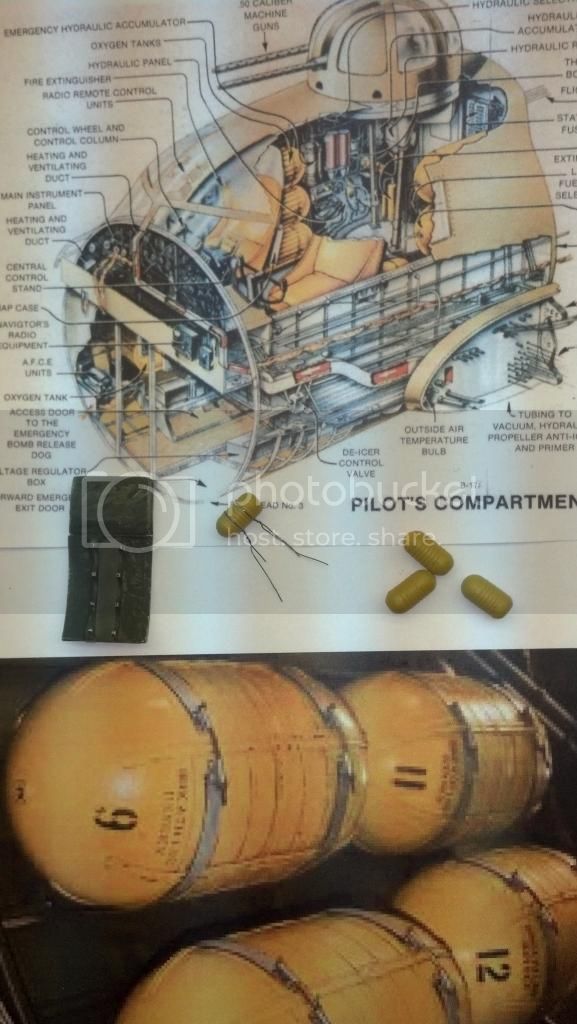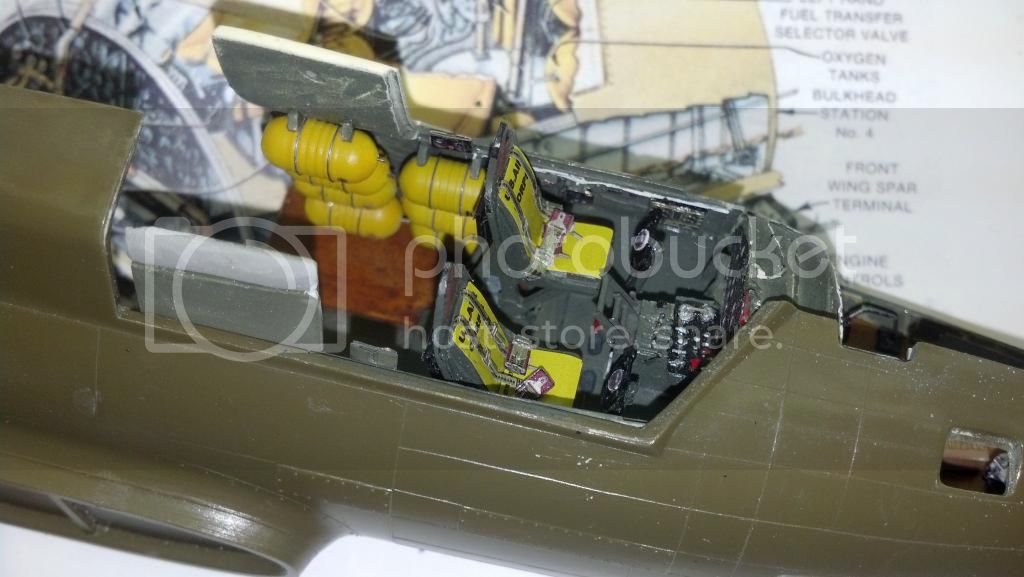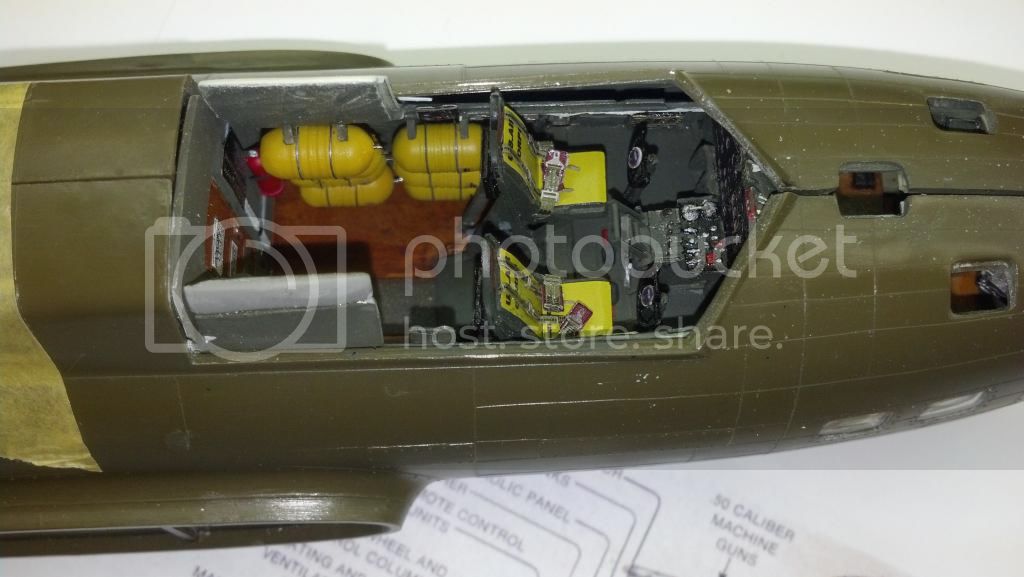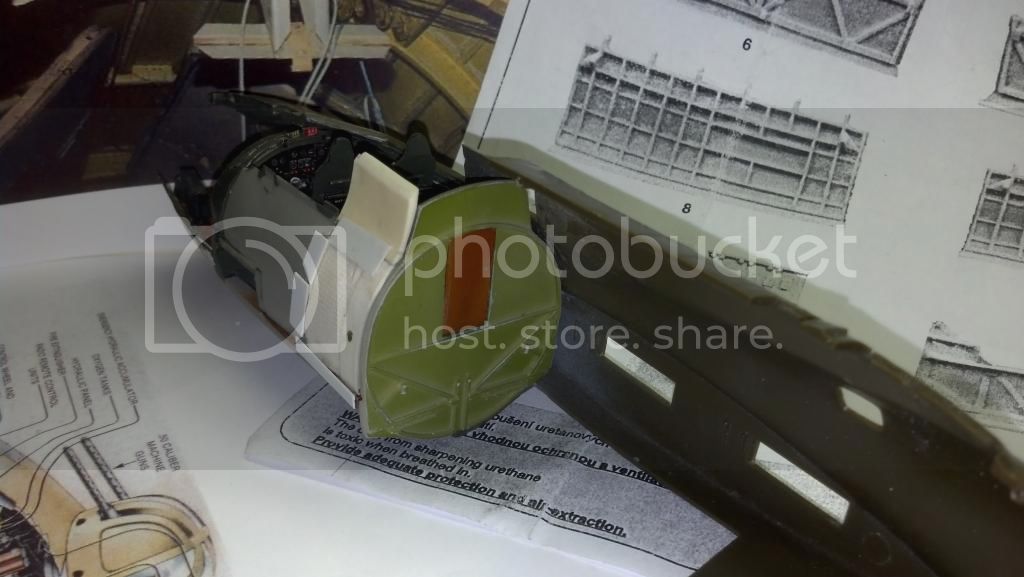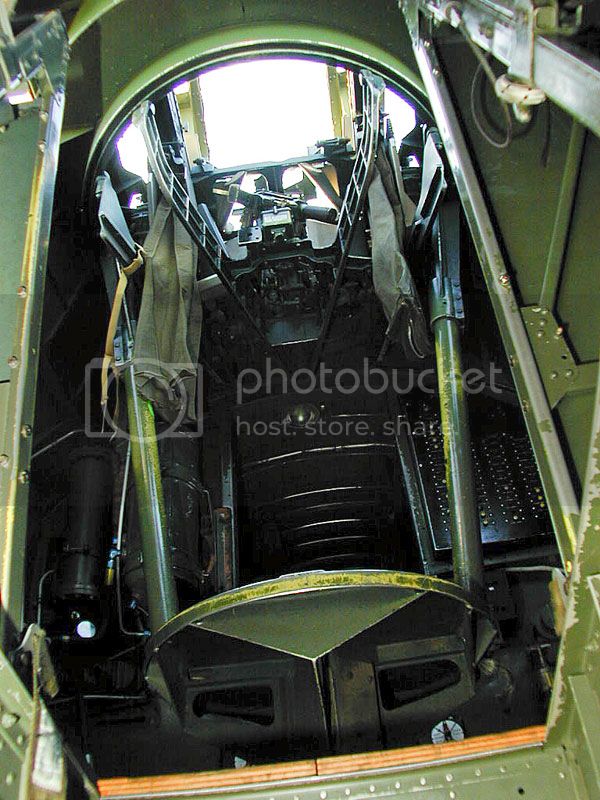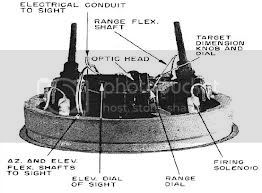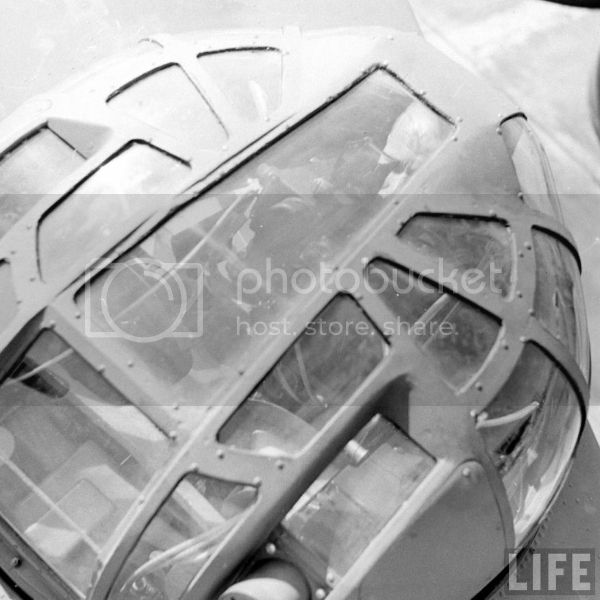Good evening everyone. For an American on U.S. Memorial Day Weekend I can think of few acts of quiet meditation and remembrance better than building a WWII bomber model. Since I knew half of the crew who flew Luscious Lady, they were on my mind as I worked on this today.
The area of the A/C we're dealing with, the after pilots' compartment, was the "home" of Dale Rice, the crew's engineer and top turret gunner. I never met him but did meet his widow in Rahway, NJ in the 80s. He was reportedly a very inspirational teacher and high school coach after the war.
So, I left off with the after bulkhead to the pilots' compartment at the last post. First, I'd like to post a couple of pictures of this area from that "Memphis Belle" photo shoot I relied on before in the nose.
Below you can see the left rear area just to the left of the door to the bomb bay.
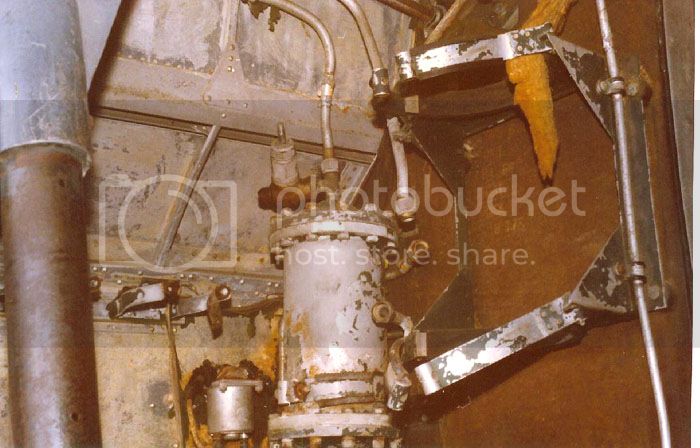
It's in pretty sorry condition and I am happy that the National Museum of the U.S. Air Force in Dayton, Ohio is restoring the A/C after years of neglect. But one thing you can see from this is patches of what sure looks like "bronze green" to me on one of the pieces of hydraulic equipment in the corner. and the bracket for the hydraulic tank to its right.
The badly vandalized A/C main fuse panel can be seen to the right of the door in the next picture, along with what appears to be brackets for additional oxygen bottles on the port side. (Not sure if I'll include them in this build.)
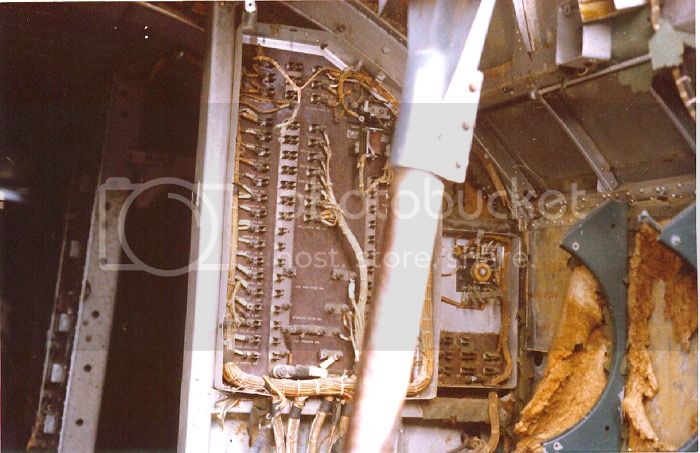
Below you will see how I detailed the after bulkhead, with the left side picture of the "Belle" as a backdrop:
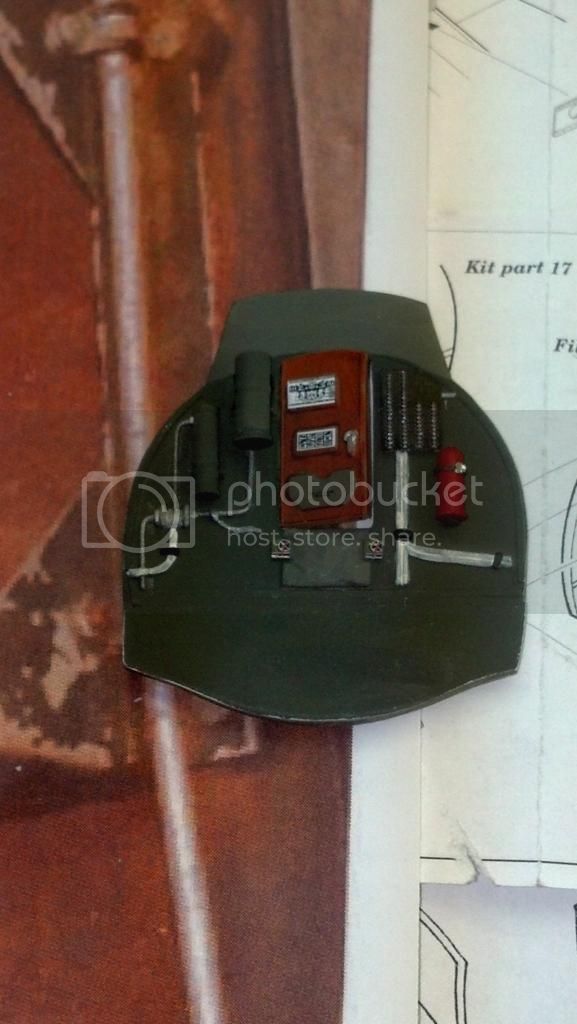
Let me tick off what you are seeing here starting from the left.
First, the base part is the "Model Detail" after bulkhead from the Czech bomb-bay set I mentioned before. You can see it, and the original Monogram part from the B-17G kit in a "before and after" collage I put together below:

So, moving from left to right:
1. The hydraulic piping and valve are silver with white electrical wiring and black cable brackets, as found elsewhere in the A/C.
2. The two pieces of hydraulic equipment to the left of the door are from the True Details cockpit set, and are glued to the Eduard brackets after the kit equivalents were cut off the resin bulkhead. Interestingly enough, Eduard's brass set just gives you the brackets, and doesn't even make reference to the two parts that fit on to them. Strange! To get everything together you really do need both the Eduard cockpit set and the TD one. Note: be careful positioning these two cylinders,, especially the left-most one, to prevent interference with the cockpit side wall.
3. The door was cut out from the Monogram B-17G part. From what I have seen in reference pictures, these doors were plywood and were left in a varnish finish just like the floor. I used the same painting method: wood color, Tamiya clear orange, and craft paint acrylic, burnt umber for weathering. I like the effect, especially with the door fixed partially open. I didn't put a door handle on the door, just painted the molded one that's there: works for me.
4. The two white decals on the door merit special mention. They are from the Revell Germany issue of the B-17F kit, and are simply fantastic. They both look like bomb load/center of gravity charts that a flight engineer like Dale Rice or a ground crew chief would consult while loading the A/C, and are beautiful to behold up close. If you are doing a B-17F build it is worth investing in that kit for the decal sheet alone. It is FANTASTIC, providing a complete stencil set for a B-17F. The third decal is from the spares box. The OD envelope there at the bottom of the door was supposed to contain the aircraft's flight log. The Revell decal wouldn't fit and I prefered to "roll my own."
5. The OD armor plate above the door, the OD envelope at the bottom of the door, and the OD canvas below the door were painted per kit instructions. I like the contrast they provide. The two instruments/control switches below the door are from the Eduard brass set.
6. To the right of the door the fuse panel is from the Eduard brass set, and the white electrical wiring and black brackets below it and to the right are simply painted.
7. The fire extinguisher bracket is from the Eduard brass set, and the red extinguisher is from the TD set. I am debating whether to add anything to it.
Next time I'll show you the rear bulkhead glued into the right fuselage half, and discuss some other corrections needed to the left rear pilots' compartment.
Happy Memorial Day!
